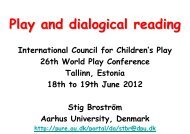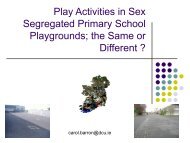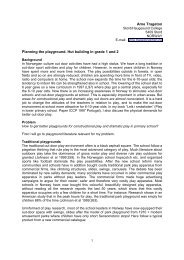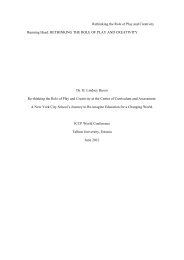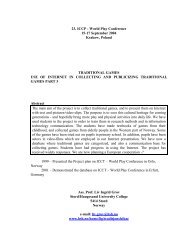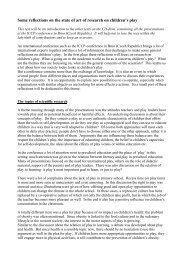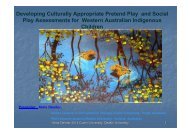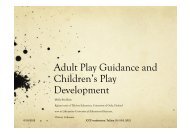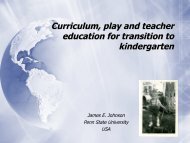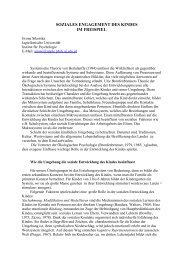Dr Ludmila Elkoninova - International Council for Children's Play
Dr Ludmila Elkoninova - International Council for Children's Play
Dr Ludmila Elkoninova - International Council for Children's Play
You also want an ePaper? Increase the reach of your titles
YUMPU automatically turns print PDFs into web optimized ePapers that Google loves.
1.3.Any new experience, including appearance of an image, is always<br />
connected with a bodily sensation. When a child starts to walk, not just a<br />
broad visual space opens up in front of him, but he feels it tonic-kinetically,<br />
he feels the “there” and the “here” with his body. Image at this age is an<br />
action in the visual-body field which is felt by a body. Grown-ups set up<br />
external boundaries of the child’s activity through prohibitions (can go here<br />
– cannot go there). With the appearance of external boundaries, there also<br />
appears a ‘reaction’ to a prohibition – an intended breach of the prohibition<br />
by the child. This is not a whim, but the only possibility to establish, feel the<br />
internal boundaries of an act. It doesn’t come easy with a child: he is<br />
attracted by anything that his eye can catch, however he gradually learns to<br />
separate himself from the outer world. The perception of his own action first<br />
happens in motion. The ‘own/alien’ boundary (external/internal) is felt by a<br />
child on bodily level – well known is the struggle over own space in a<br />
sandpit, children’s “proprietary” mood (this is mine; I’m not giving it back). At<br />
the age of approximately 2,5 years a child starts to realize that it is exactly<br />
he, who is acting: words ‘I myself’ start to appear in his speech.<br />
6



